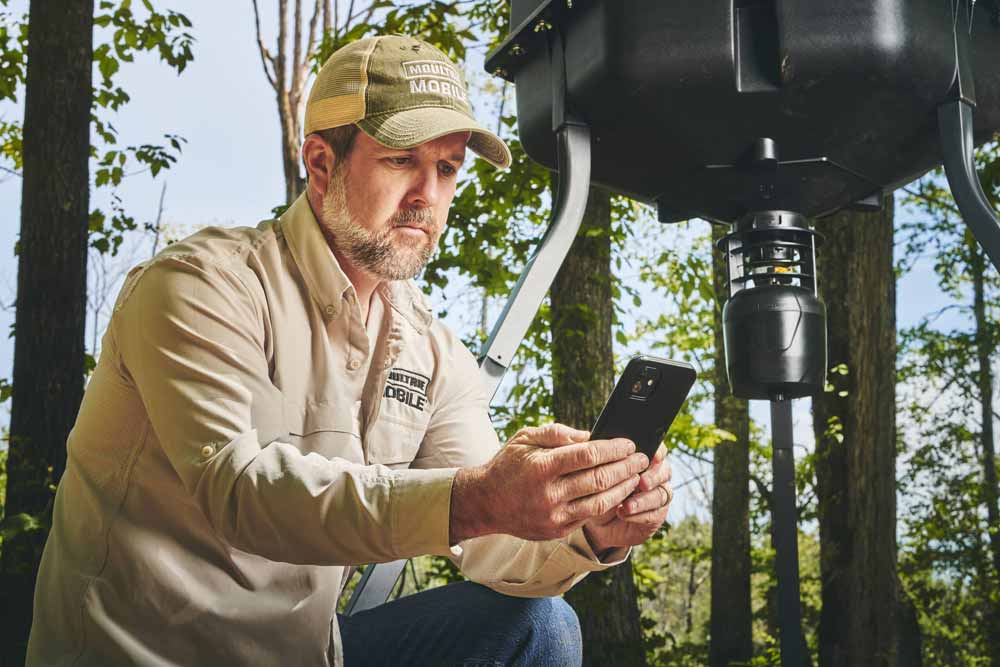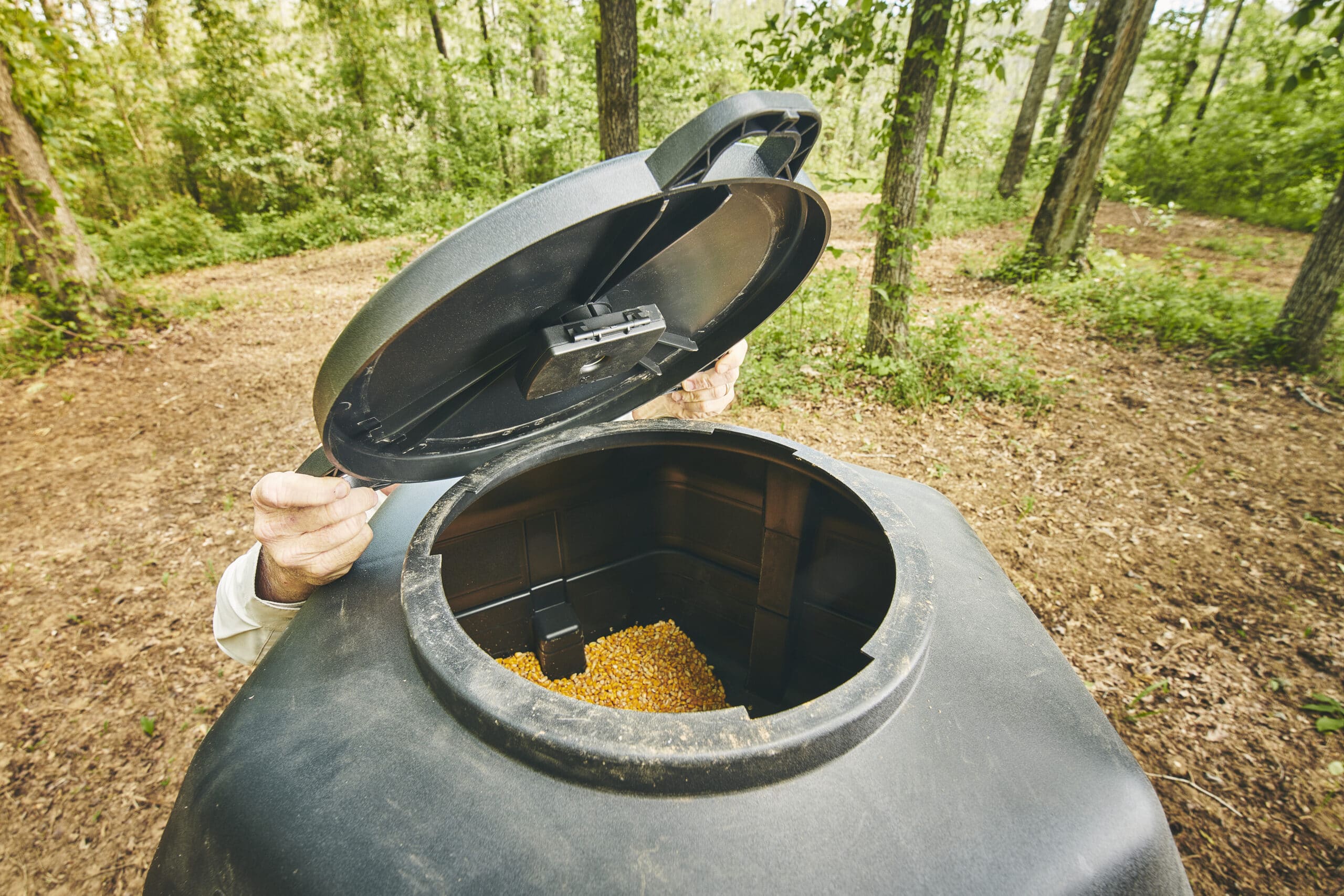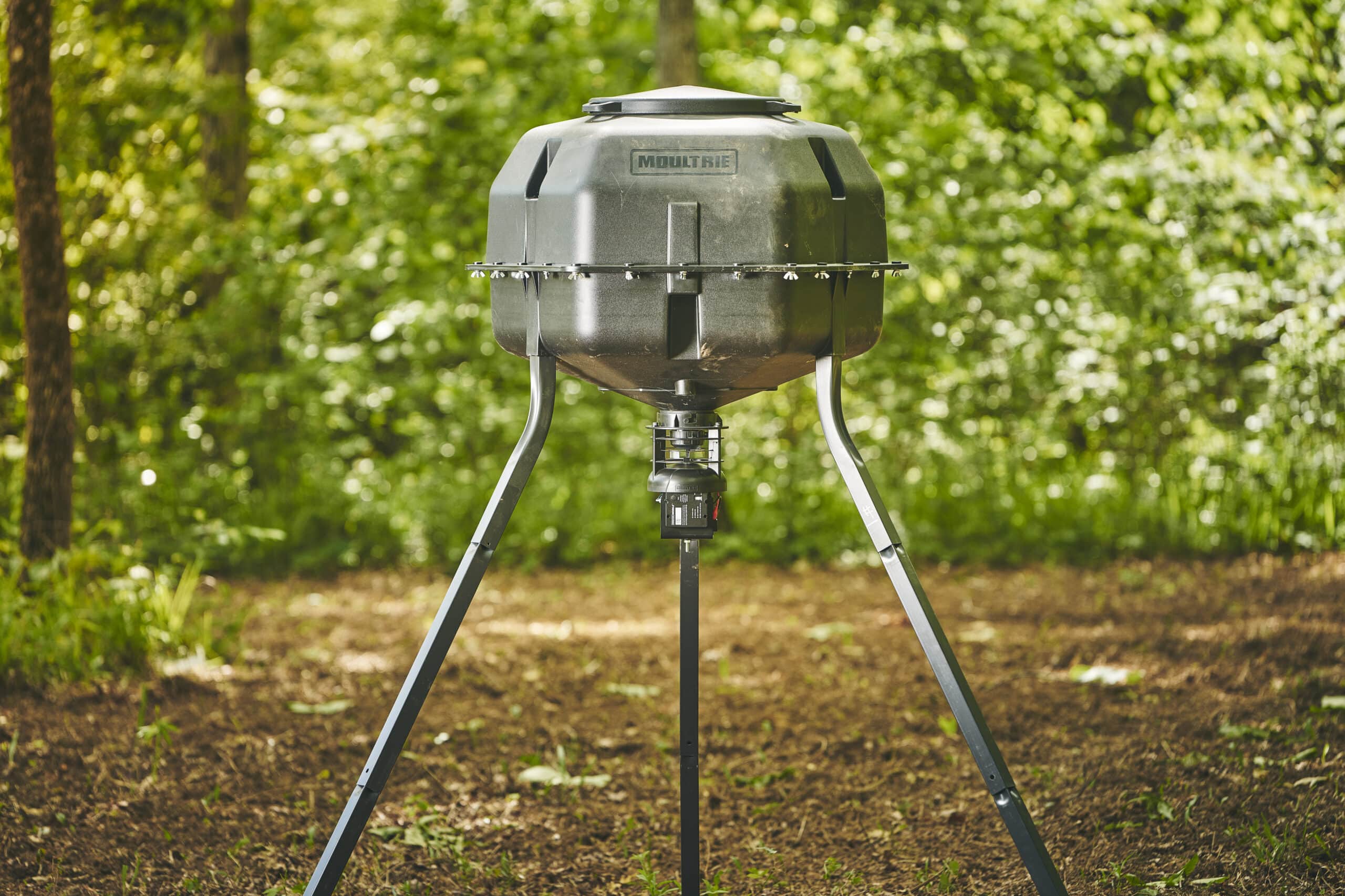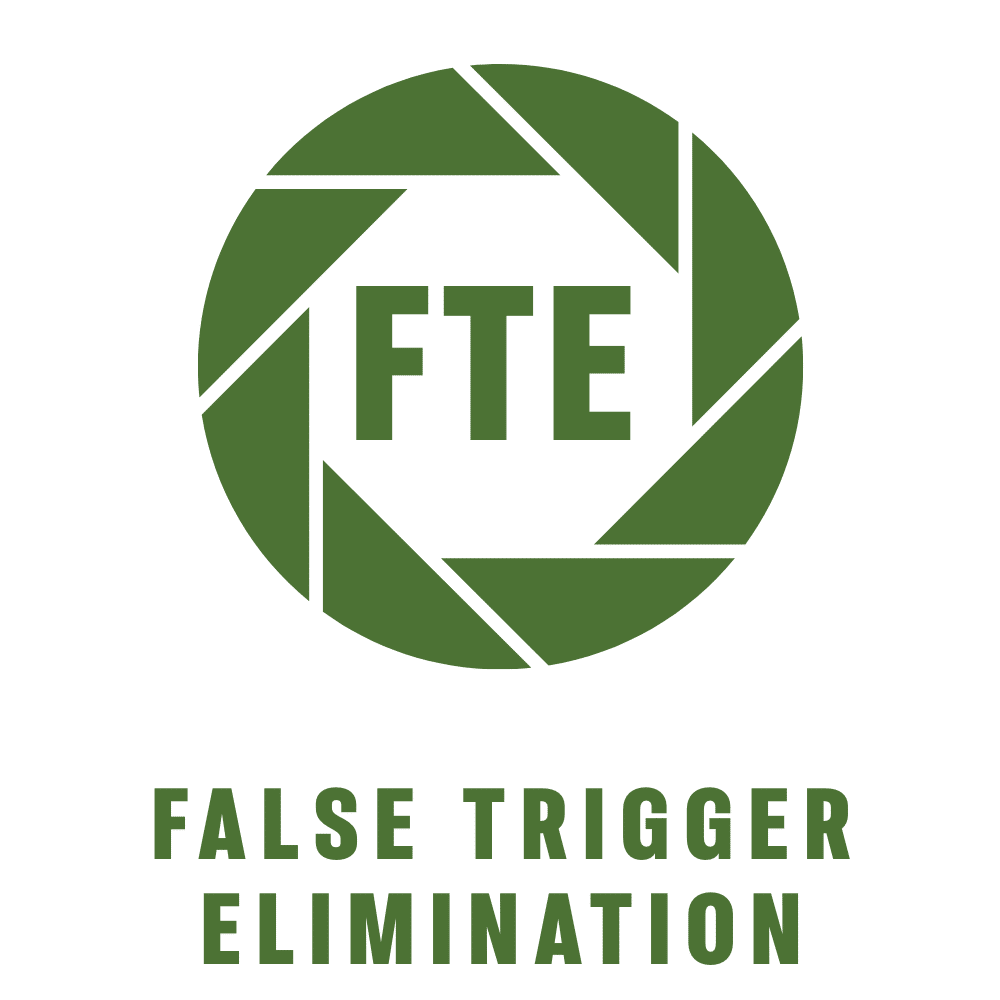How Often To Check & Fill Your Deer Feeder
Whitetail deer management requires a year-round, multi-faceted approach to get optimal results. One of the easiest things to do is provide supplemental food or minerals. But hunters typically wonder about often to check and fill a deer feeder, especially on properties that may be hours away or in another state and require remote feeder management.
Deer feeders aren’t magic wands that suddenly make whitetail deer appear on your property. They don’t instantaneously turn average bucks into Booners. But, when done correctly and with the right expectations, feeder management can be a big plus to boosting deer and other wildlife. Turkeys may use feeding zones, especially if you’re putting out corn or grains for carbs and camera images. Protein pellets also may be used, but double-check to make sure the pellets work well with spin-cast feeders so you avoid any issues.
What Time Should I Set My Deer Feeder to Go Off?

After assembling and placing your deer feeder where you want it, it’s essential to know the timing mechanism. You want to know how to set the timing unit and choose the best time for the deer feeder to go off. This can depend on the size of your feeder, your financial budget, and how often you want the feeder to go off.
Everyone is different when it comes to feeding times. Over the past 30 years, I’ve hunted on small private tracts, more giant farms, and large lodges with ample land. I’ve seen just about everything regarding feeding times. Most are morning and evening, usually about 7:30 or 8 a.m. and 5:30 or 6 p.m. But I’ve seen earlier time settings, too, and multiple throughout the day. The best time for a deer feeder to go off is when you want it to go off.
How Often Should I Check My Deer Feeder?
After you’ve decided what supplement to use and the best time to set your deer feeder, you have to consider often to check and fill the feeder. This usually meant guesstimating with Good ol’ Boy Math in the olden days. You’d think about a 40- or 55-gallon feeder, the amount of corn or pellets thrown once or twice a day, how long those would be thrown — Three seconds? Five seconds? Longer? — and try to figure out how long the supply would last. Ultimately, you’d drive back to your property to check the barrel. Half is gone after x-amount of time, so that means probably by another specific week, I’ll have to refill, and … Good ol’ Boy Math usually worked but wasn’t optimal.
Today’s technology provides more reliability for checking the amount of food left in the feeder. The new Feed Hub unit from Moultrie allows you to see the amount of food, change settings, turn off the team, and other options. You can do this 24/7 from anywhere. If you’re at your child’s school event and notice the feeder is almost empty, turn it off. Perhaps it will rain for four or five days, and you don’t want to waste the food. Or you suddenly see more deer or turkeys in the area and want to give them more love. With the Feed Hub options, it’s easy to manage remotely.

If you want to feed deer, setting the timer for 2-5 seconds will throw out a nice amount. If they have other natural foods, such as in spring and summer, additional help is excellent. You may want to increase the time to provide more for them in winter. If you want to attract deer, 10-20 seconds will fling a lot and get the job done. That would put more corn or grain on the ground for deer to find. They would begin associating the food with the feeder, and your plan could pay off.
Adding an excellent cellular trail camera near the feeder to watch everything is a great idea. If you live in an area with bears, be prepared for possible tip-overs. Bears and hogs are notorious opportunists. If possible, secure the feeder in the ground with stakes and on nearby trees with straps. Also, when checking your feeders, be on the lookout for snakes that may be lingering to ambush varmints.
Setting Goals and Expectations
Using feeders is a substantial part of management if you desire to help provide additional nutritional resources to deer. Be sure to check or know your state’s regulations or laws on supplemental feeding and hunting with the aid of bait.

Your goals and expectations should be realistic based on what you’ve seen on your game camera images or personal experiences in the field. The bucks aren’t going to turn into Midwest Monsters in one summer. Does aren’t going to pack on 20 extra pounds of muscle and produce cyber fawns. Your supplemental assistance can certainly help but remember to be realistic with expectations as you strive to meet management goals.
Feeders also can be great hunting tools if you need to hit specific quotas or have new hunters. I’ve been to places where I was told, “You’ll be at a feeder and shoot whatever comes out.” They needed to hit management quotas, and I was glad to help. I’ve been in stands over feeders at other places but had specific requirements about what buck I could shoot if one showed up. Some did, some didn’t. Feeders are not magical. It would be best to decide early whether your feeder management goals are attracting and killing deer or feeding them.
Whatever your goals and plans, you’ll learn the best time to check and fill your deer feeder through trial and error. Once you get squared away or become acquainted with the Feed Hub unit to manage remotely, you’ll have more success and enjoyment.


Featured
Juicy homemade jalapeno cheddar brats are perfect for grilling all summer long. They’re packed with all the right seasonings and fresh ingredients, making them extra tasty.

Featured
MeatEater and Moultrie Mobile join teams to bring hunters closer to nature.

Featured
These wild turkey skewers are tender and smothered in a homemade teriyaki glaze. Wild turkey sometimes gets a bad reputation for being a tough meat but when prepared properly using the steps in this recipe, the results are amazing.



